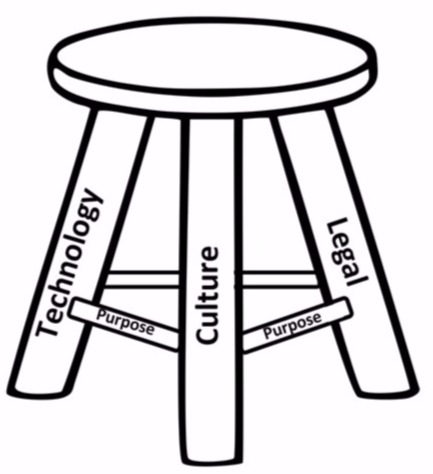Overcoming information sharing issues

Holly Bremner,
Head of Dissemination,
Centre of Excellence for Information Sharing
Last week I caught up with a journalist from a publication for local authorities where we talked about the Centre’s work and the role of culture and behaviour in information sharing. He commented that there appears to be little or no guidance for practitioners on how to flag an information sharing issue, which got me thinking…
Their view was that greater guidance for practitioners was needed, but our experience of working closely with practitioners from across a range of local places and services has told us that challenging the cultural issues of information sharing takes a much deeper approach. So, I headed back to the office to get some views from our team of Engagement Managers and asked them, if they were speaking to a practitioner who was having trouble sharing information, what advice would you give them? Over the next five days, Imogen Heywood, Emma Hart, Anita Saigal, Damion Nickerson and Gurpreet Sarai will be sharing their insight to help support practitioners in overcoming information sharing issues.

Imogen Heywood,
Engagement Manager,
Centre of Excellence for Information Sharing
It’s day one of our blog week focusing on supporting practitioners, and for me, I would ask the question: “have you started in the wrong place?” Sharing information effectively requires three key pieces to come together:
- legal;
- technology; and
- culture.
Often when we find people in local places getting stuck or frustrated with their data sharing project it’s because they’ve started working on just one or two of these elements in isolation (perhaps focusing just on technology and/or legal compliance).
Like the legs of a camera tripod or a kitchen stool, it’s only when all three of these elements are built up together and connected that the structure is strong enough to work. To bind these elements and make sure they all fit together, it’s important that before you start on these individual aspects you develop a clear and shared purpose for sharing data.
In our work with local places, we’ve found that it’s not easy to create a clear and focused purpose for sharing information, but that it is worth putting in the effort at this stage. One thing which helps is to bring people together from across different areas of work to develop and agree a shared purpose. This could involve IT specialists working together with information governance leads and operational managers, or strategic leaders coming together with frontline staff and service users. The important thing is to create a space where everyone feels able to ask those ‘stupid questions’ (what do you mean when you say commissioning/vulnerable people?) and share their own ideas.
Working collaboratively to develop a shared purpose, or reason, for why you’re sharing information and what you’re going to do with it, will not only help you develop a sense of shared ownership and trust, but also help you to identify legal gateways, develop the specification for your software system, and plan how best to communicate your project to all the relevant people.

So, the key to starting well, is to make sure you and your partners are all clear on why you’re wanting to share information and what you’re planning to do with it. Or put more simply, purpose is key!
If you’ve missed any of the blogs from the week you can find a full list on our blogs page and if you’d like to be kept up-to-date with all things information sharing why not sign up to our free email updates?
